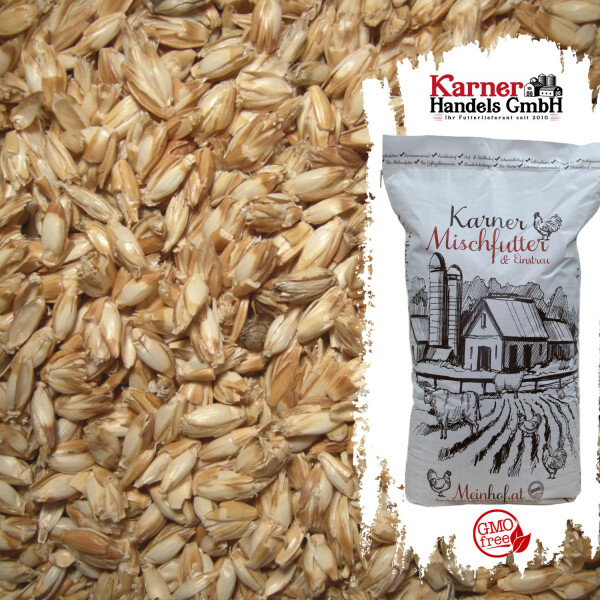Essential Nutrients Missing in Low-Quality Chicken Feed

When you pick up a bag of budget-friendly Hühnerfutter, the price tag might be appealing, but the nutritional content often tells a different story. Low-quality feeds frequently cut corners by using less expensive ingredients and fillers that fail to provide complete nutrition. While these feeds might fill your chickens' crops, they often leave critical gaps in their diet that can impact everything from egg production to immune function. Understanding what's missing can help you make informed decisions that support your flock's long-term health and productivity.
The Incomplete Protein Puzzle
One of the most significant shortcomings in low-quality feed is inadequate protein, specifically the lack of balanced amino acids. While the bag might claim a certain protein percentage, that number means little if it doesn't contain the essential amino acids chickens need. Methionine and lysine are often deficient in feeds that rely heavily on corn and other grains without proper supplementation. Without these building blocks, birds experience poor feather growth, reduced egg production, and slower development as their bodies struggle to create essential proteins for maintenance and growth.
Calcium Deficiency and Shell Quality
Many inexpensive feeds contain insufficient calcium or use forms that are poorly absorbed. While layer feeds should contain 3.5-4% calcium, budget options often fall short, forcing hens to draw calcium from their own bones to produce eggshells. This leads to weak-shelled eggs and can eventually cause osteoporosis in laying hens. The problem compounds when feeds use large particle limestone that's difficult to digest or fail to balance calcium with phosphorus in the proper 2:1 ratio needed for optimal absorption.
The Vanishing Vitamin Spectrum
Vitamins are among the first casualties in cost-cutting formulations. Low-quality feeds often skimp on the vitamin premix, particularly the fat-soluble vitamins A, D, and E. Vitamin D3 deficiency is especially problematic since it's crucial for calcium absorption—without it, dietary calcium passes through birds unused. Vitamin A supports respiratory and vision health, while Vitamin E acts as a critical antioxidant. These deficiencies often manifest slowly as reduced disease resistance, poor growth, and reproductive issues.
Missing Trace Mineral Support
While macrominerals like calcium and phosphorus get most of the attention, trace minerals are equally important and frequently inadequate in budget feeds. Zinc, manganese, and selenium play crucial roles in enzyme function, immune response, and reproduction. Zinc deficiency leads to poor feathering and skin problems, while selenium works with Vitamin E as an antioxidant. These minerals are expensive to include in proper amounts, making them common exclusions in feeds where price takes priority over nutrition.
The Essential Fatty Acid Gap
Quality feeds include balanced fats that provide both energy and essential fatty acids, but budget options often neglect this balance. Omega-3 and omega-6 fatty acids are crucial for hormone production, cell membrane integrity, and vitamin absorption. When feeds rely solely on inexpensive grains like corn, the fatty acid profile becomes skewed toward omega-6 without adequate omega-3s. This imbalance can affect everything from egg nutritional content to inflammatory responses in birds.

The Gut Health Component
Many premium feeds now include gut health supporters like probiotics, prebiotics, and organic acids—components almost universally absent from low-quality formulations. These additives promote healthy gut flora, improve nutrient absorption, and help control pathogens. Without them, birds may fail to extract full nutritional value from their feed, even if the theoretical nutrient content appears adequate on paper. The result is poorer feed conversion and increased susceptibility to digestive issues.
The Antioxidant Void
The preservation of feed itself often reveals another nutritional shortcoming. Quality feeds use natural antioxidants like Vitamin E to preserve fats, but budget feeds may rely on cheaper synthetic preservatives that don't provide health benefits. The absence of adequate antioxidants means birds have reduced protection against oxidative stress, which can compromise immune function and overall vitality, particularly during periods of heat or other environmental stresses.
- Art
- Causes
- Crafts
- Dance
- Drinks
- Film
- Fitness
- Food
- Jocuri
- Gardening
- Health
- Home
- Literature
- Music
- Networking
- Alte
- Party
- Religion
- Shopping
- Sports
- Theater
- Wellness



